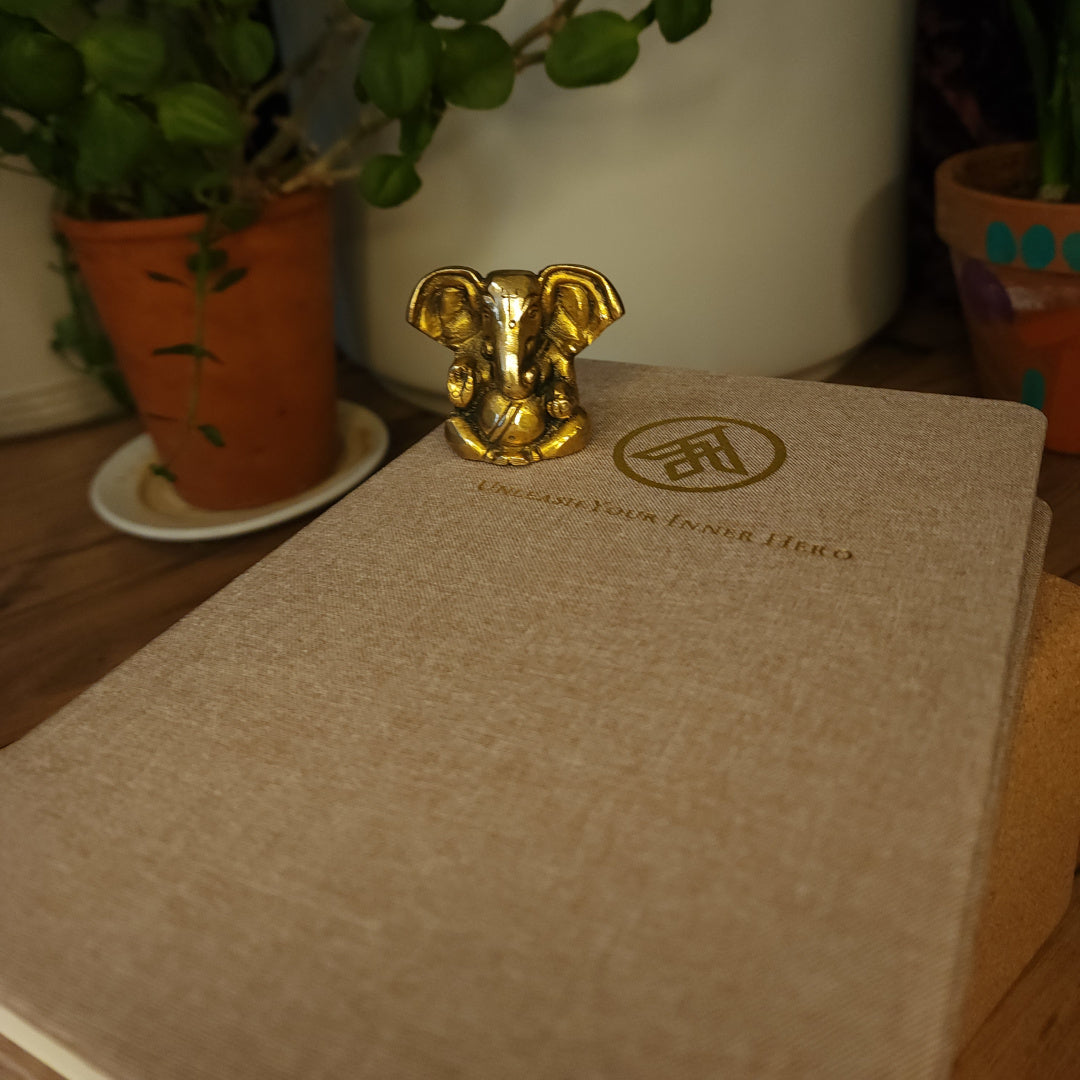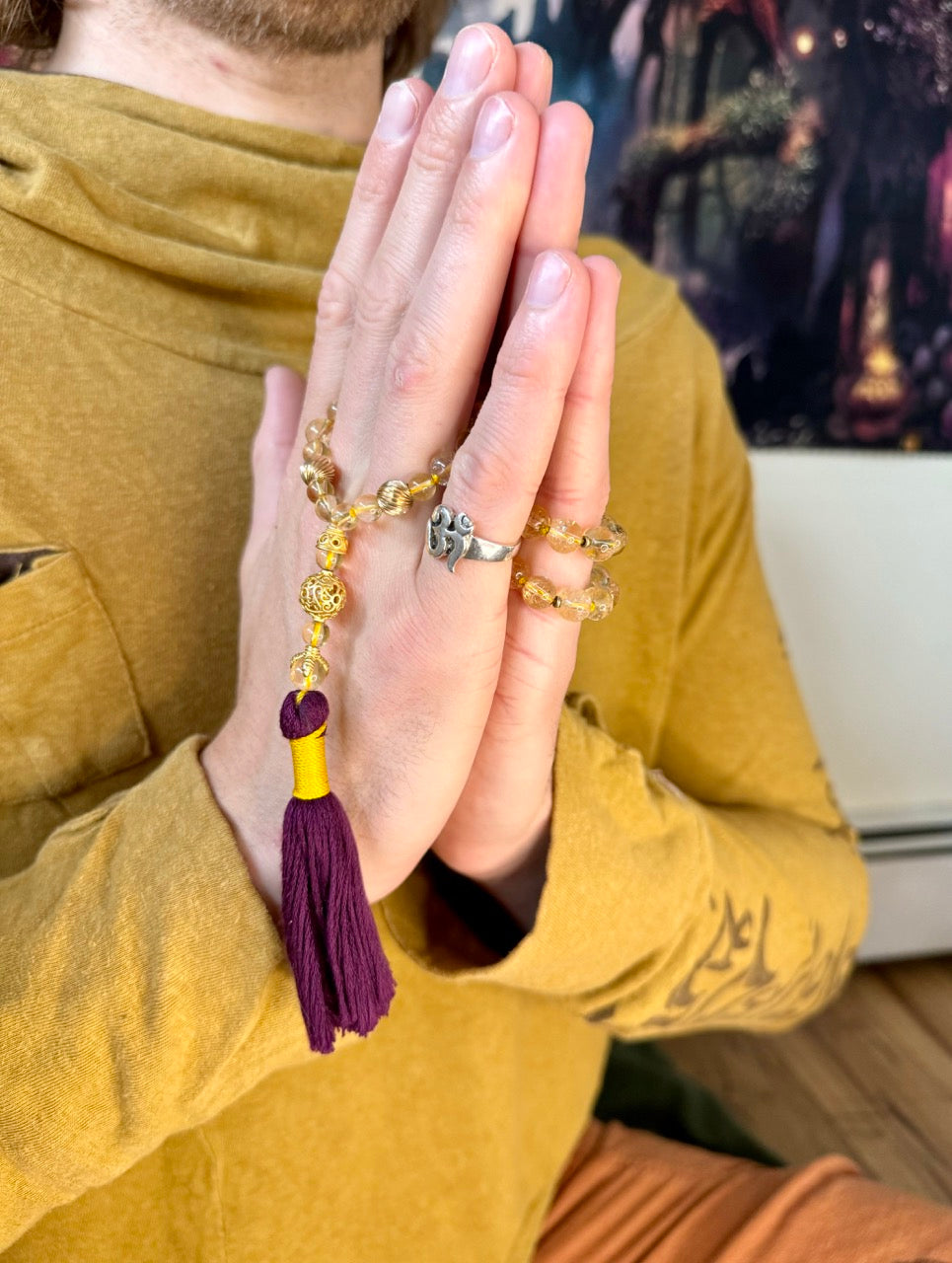Hasta (Hand)
Jack UtermoehlShare
Hasta is a Sanskrit term meaning "hand." In yoga, hasta is used to describe movements, gestures, or poses involving the hands, emphasizing their role in alignment, energy flow, and expression.
Hands in yoga often symbolize connection, intention, and balance, serving as tools to ground, reach, or direct energy throughout the body and practice.
Etymology and Meaning
Root Word: "Hasta" (hand)
Translation Variations: Hand, gesture, reach
Pronunciation: Hasta [HUHS-tah]
Hasta refers not only to the physical hand but also to its ability to convey energy (prana) and intention.
Whether grounding in poses or creating hand mudras, hasta enhances alignment, stability, and mindfulness.
Examples of Hasta in Yoga Poses
- Utthita Hasta Padasana: Extended Hand and Foot Pose, emphasizing alignment through the extension of hands and feet.
- Padahastasana: Hand-to-Foot Pose, where the hands connect with the feet in a forward fold.
- Hasta Uttanasana: Raised Hands Pose, involving a stretch upward to open the chest and shoulders.
Hasta in Mudras (Hand Gestures)
Hasta is also significant in the practice of mudras, symbolic or intentional hand gestures used in yoga and meditation to direct prana and convey meaning.
- Anjali Mudra: Hands pressed together at the heart, symbolizing gratitude and balance.
- Jnana Mudra: Thumb and forefinger touch, representing knowledge and wisdom.
- Abhaya Mudra: Hand raised with palm facing outward, symbolizing protection and fearlessness.
Symbolism in Yoga Philosophy
Hasta represents connection and intention, highlighting the role of hands in bridging the physical and energetic aspects of yoga. Hands are seen as extensions of the heart, offering an opportunity to ground, express, and channel energy during practice.
Jewelry Designed for Your Practice
We created this collection to honor the wisdom and beauty of yoga. Each piece is crafted with intention to support your journey, on and off the mat.
Practical Application
In Physical Practice
- Pay attention to hand placement in poses to improve alignment and stability.
- Use hasta to ground or extend energy, such as rooting through the palms in Downward-Facing Dog.
In Energetic Practice
- Incorporate mudras during meditation to direct energy and deepen focus.
- Visualize energy flowing through the hands to enhance awareness and connection.
Quotes and Wisdom
"The hands are extensions of the heart. Through them, we connect with the world and ourselves."
"Hasta reminds us to ground, reach, and offer with intention."
Modern Relevance
Hasta practices in yoga offer a way to enhance physical alignment, energetic awareness, and mindfulness. Whether through grounding poses, expressive gestures, or hand mudras, hasta provides tools to deepen the connection between body, mind, and spirit in modern yoga practice.
Related Concepts
Padma: Lotus, often combined with hasta to form gestures like Padma Mudra (Lotus Hand Gesture).
Mudra: Hand gestures that direct energy, complementing the physical and symbolic role of hasta in yoga.
How to Practice Hasta
Mindset: Approach hand placement and gestures with intention, recognizing their role in alignment and energy flow.
Actions: Experiment with mudras during meditation or focus on grounding through the palms in asanas.
Reflection: Observe how mindful use of the hands influences your practice and connection to your body.
Suggested Reading
- Mudras: Yoga in Your Hands by Gertrud Hirschi.
- The Key Muscles of Yoga by Ray Long.
Related: The Best Mudra Books
Conclusion
Hasta symbolizes the profound connection between physical movement and energetic intention in yoga. By focusing on the role of the hands in alignment, grounding, and expression, practitioners can enhance their practice and deepen their connection to themselves and the world around them.







